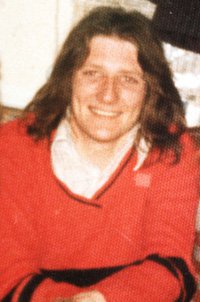
We remember the Patriots of 1916 whose executions began on 3 May and extended until 12 May. However, 75 years later on 5 May, another patriot joined them in Tir na nOg and should also be remembered. It was 1981 and a young 26-year old patriot named Bobby Sands had succumbed to a self-imposed hunger strike. The spin-doctors in the British Information Service were at wits end preparing propaganda, the Irish Diaspora around the world were protesting, and the media had a field day. Sadly, few knew or understood – even while it was happening – the reasons why.
Unable to stem the rising tide of nationalism in north-east Ireland, the Brits had resorted to Internment – a policy in which snatch squads lifted young men who were considered possible perpetrators of anti-British activity. Often only on suspicion, men and boys were interned without trial in the H-Blocks of Long Kesh. As the sweeps continued and the number of prisoners grew, England decided political prisoner status was offensive to the Crown so they re-classified them as criminals. The effect on those interned was they could no longer assert that their claim for Irish independence was legitimate. They were told to wear prisoners garb, which they refused to do. In 1976, to protest against criminalizing their cause, they went on the blanket, surviving in cold stone cells through freezing northern winters with nothing but a woolen blanket wrapped around them. In retaliation, authorities removed all privileges including cleaning the cells and emptying waste pails which left them in a foul-smelling environment. In 1978, the prisoners began the dirty protest in which they smeared their excrement on the walls. Showers were withdrawn and prisoners were subjected to cavity searches and mistreatment. Finally, they resorted to the age-old Celtic tactic of the Hunger strike.
The Hunger Strike goes back to ancient Brehon Law of the Celtic people. It was a method of redress against one more powerful. If a person felt an injustice had been done, they could demand retribution by sitting at the door of the perpetrator and take no food, while a sympathetic public looked on and indignation grew daily against the party who had forced such a course. In Autumn 1980, the British government conceded, but when the strike was over, the government reverted to its previous hardline stance. On 1 March 1981, Bobby Sands led another Hunger strike. This one would have other prisoners join the strike at staggered intervals in order to maximize publicity. And so it began.
How hard is it to commit to such a course? Some believed that the striker graciously lapses into a coma and is spared any final pain, but the idea that starvation leads to a blissful, euphoric death is nonsense! By the time death comes, starving people are blind, deaf, and speechless; anything but peaceful. Their limbs are bloated, their abdomens swollen, and they are as dry as tough old parchment, no longer able to muster enough fluid – even to cry. Their tongues are thick and bright red, their skin is shriveled and scaly, and they are always cold. Their hair loses its color and falls out. Their gums ulcerate and teeth loosen. They suffer from constant bouts of nausea and diarrhea. The body burns off all stores of sugar, drawing them first from the liver. Then the brain mobilizes all available fat, pulling it from throughout the body to use as fuel. The imbalance of fatty acids (ketoacidosis) results in nausea, vomiting, extreme thirst and a gasping for air. Finally, proteins are pulled out of all muscles, including the heart and those used for breathing. Antibodies and white cells needed to fight infection become inefficient and resistance to infection is gone. As the body consumes itself they lose mental clarity and finally sink into a coma. Dr Jerome Cassera, associate physician-in-chief at New England Medical Center, said One of the horrible parts of starvation is that the victims are conscious until very near the end. It is a long, slow, and dreadful process.
In the case of Bobby Sands, it took 66 days of this torture for him to succumb. He was immediately followed by 25-year old Francis Hughes (59 days), 24-year-old Ray McCreesh (61 days), 23-year-old Patsy O’Hara (61 days), 30-year-old Joe McDonnell (61 days), 29-year-old Martin Hurson (46 days), 25-year-old Kevin Lynch (71 days), 25-year-old Kieran Doherty (73 days), 23-year-old Tom McElwee (62 days), and 27-year old Mickey Devine (60 days). Patrick Quinn, was next to fall into a coma after 47 days, but his mother authorized emergency medical treatment to save him. Five other prisoners in various stages of the strike finally called it off after their families were subjected to pressure by Irish Catholic churchmen and politicians according to a prisoners support group.
Were the strikers right? It’s not for us to say, but as a result of their courage, Ireland’s struggle became world-wide news. Just like the hunger-strike death of Terence MacSwiney had moved a young Vietnamese dishwasher in London’s Carlton Hotel named Nguyen Ai Quyoc to tearfully observe that A Nation which has such citizens will never surrender, MacSwiney’s own words on the deaths of patriots were recalled, It’s because they were our bravest and best that they had to die. No lesser sacrifice could save us. Because of it our cause is holy’. And the month of May – the month of Our Lady – had taken on an added significance and a new decade has been added to the Republican Rosary. So, as we breathe a prayer for the heroes of 1916 on their 100th anniversary, let us also say one Hail Mary for each of the ten stars that began appearing in the heavens over north-east Ireland 35 years ago on May 5, 1981.
By the way, in 1941, Nguyen Ai Quyoc adopted the name Ho Chi Minh and took the lessons of Ireland’s anti-imperialist struggle to his own country against the French.